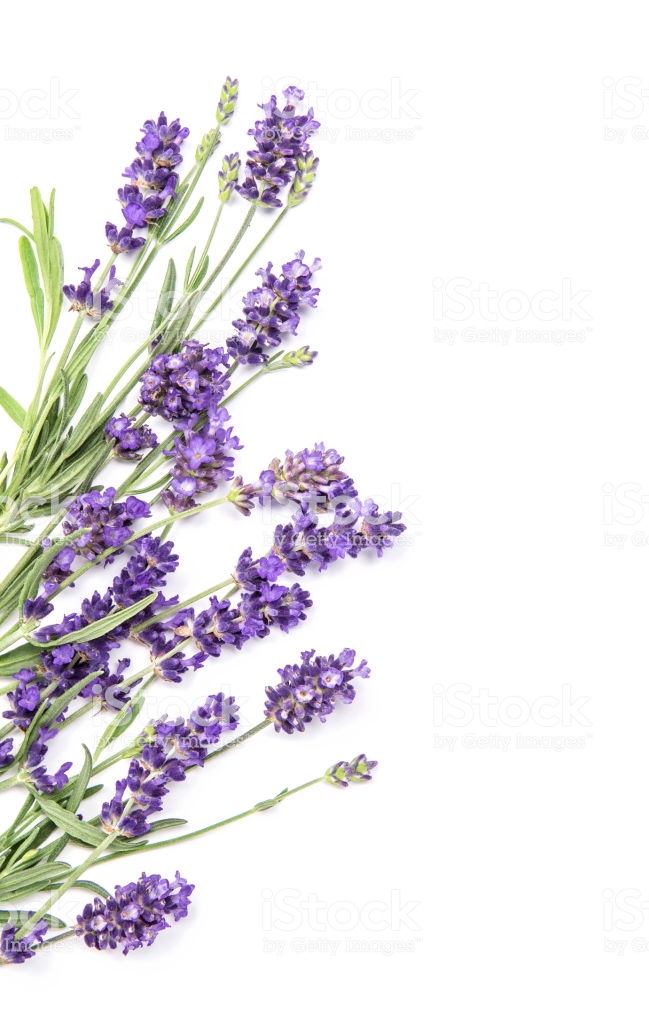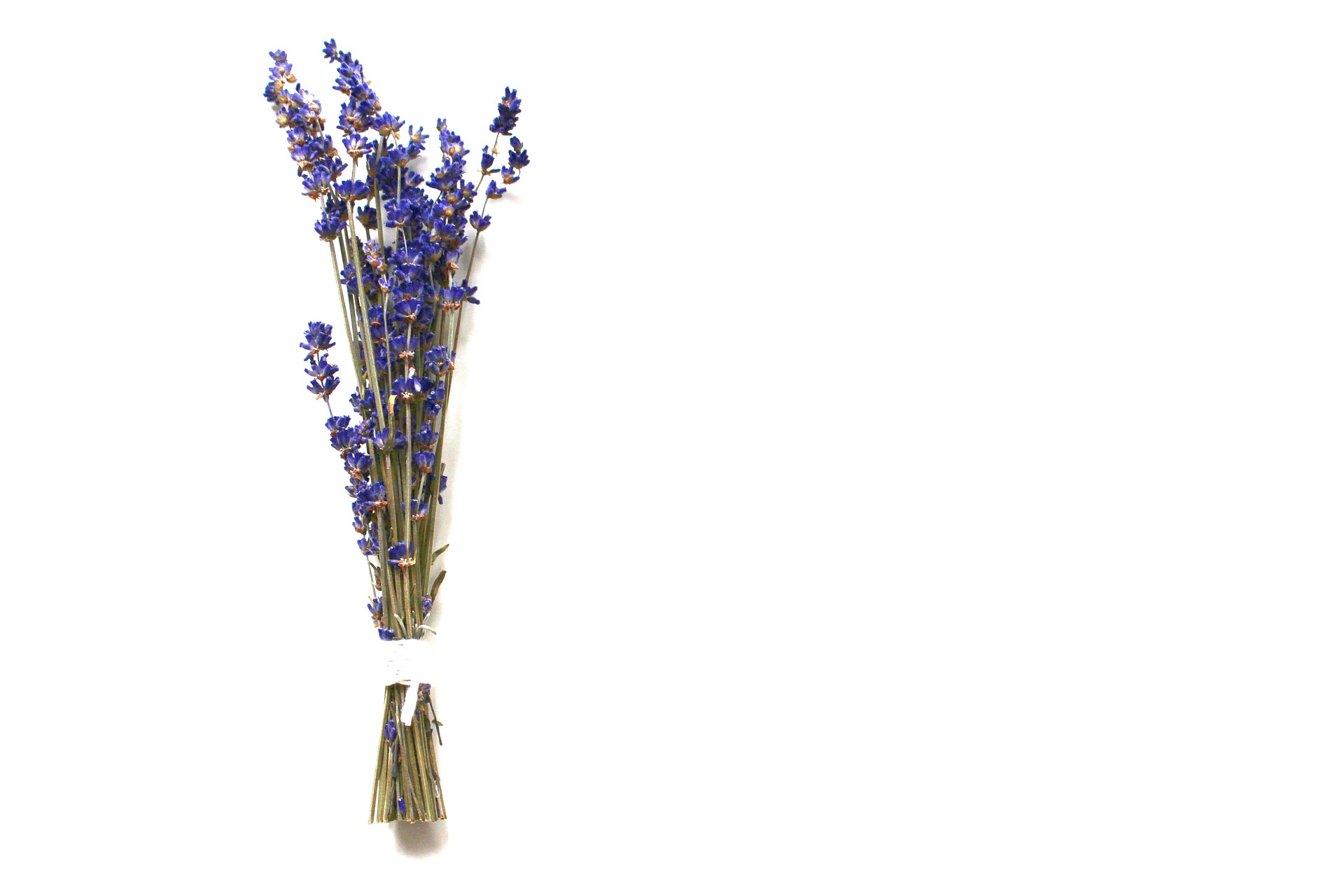
Lavenders are summer flowering, perennial shrubs with many small, fragrant flowers that are clustered in spikes. It is within these aromatic heads that the essential oil is contained and the extraction method is by steam distillation.
When growing for commercial purposes it is essential that the correct cultivars are planted and there are books that are recommended reading on this subject. Lavandula angustifolia varieties are best for aromatherapy andculinary purposes while Lavandula x Intermedia (or Lavandins) are used for aromatherapy and widely used in soaps and cosmetic products. Most commercial lavender plantations are established to produce essential oil, while others also combine this with the production of dried rubbings and flower heads.
Lavenders prefer a well drained soil that has full sun for most of the day. It prefers slightly alkaline soils, so lime should be applied well before planting. Although lavender is generally thought of as a drought-tolerant plant once established, drought stress can affect the performance of established crops, greatly reducing the flower head yield. In particular, the flower heads are susceptible to damage from hot, dry, salty winds.
Lavender is very tolerant of cold winters providing that the soil remains free-draining.
West coast growers have grass growing between their lavender rows to take up the moisture, while East coast growers find they can retain sufficient moisture in the soil by keeping the inter-rows weed free.
Good weed control is important to maximise the productivity and longevity of the lavender crop. To minimise oil contamination, the crop must be weed-free at harvesting time.
The expense and labour involved in weed control is frequently underestimated and crop yields can suffer badly. Some small growers have planted into weed mat and it has proven to be an excellent option for weed control and although it is expensive initially it pays for itself in the long term.
Weed mat will also protect the roots of the young plants from rabbits who will otherwise have a field day after the planting out.
If you are growing organically and not using weed mat, then a regular regime of hand-weeding and hoeing is required. Mulching of the rows is also an option as a means of weed-suppression. For non-organic production there are various herbicides that will give good weed control.
Harvesting time will be late December / early January for the angustifolia varieties and late January / early February for the lavandins (Grosso, Super etc) but can vary from district to district and from year to year as climatic conditions determine when the crop is ready.
It is a test for fitness if you harvest manually (and also a test of your friends). A mechanical harvester is a significant investment and is not really justified until you have a large area to harvest. There are herb harvesters available for purchase but some members have made their own versions of harvesters that they use.
Most people cut by hand using sickles, hedge trimmers or serrated edged knives (scissors and secateurs tend to become seized up from the resin in the stems). It is important not to allow the cut lavender heads to fall onto the ground as they must be kept free of other vegetable matter as this may affect the oil when it is distilled with the lavender. Pruning of the bushes can be carried out straight after harvesting or left until there is more time available, as long as they are pruned before the first frosts set in.
It is preferable to distil on the same day as harvest. In France they can leave the cut lavender in the fields for up to three days, though this practise would not be wise in New Zealand. The critical factor is that the crop must be dry (even of dew) when you harvest and it should be stored in conditions where it will not sweat. Some people have stored lavender in jute wool fadges or cotton duvet covers. Others spread their lavender out on the floor of a shed so that the field heat can escape until they can get it to the still. A still can be a major capital investment and unless you intend to be a major producer, it is probably better to get access to someone who will contract distil your crop for you. At present there are several stills available throughout the North and South Islands.
It is one thing to grow and distil oil successfully but the ultimate aim of most members is to make an income from oil production and that involves looking at marketing. Some who produce oil do it for use in their own added-value products for sale and some sell to brokers as a commodity.
Though marketing is not the role of the Association, we assist with networking among members who may be able to help and also hold workshops at our Conferences.

The text books refer to diseases and there are very few that affect lavender in New Zealand.
The major worry is Alfalfa Mosaic Virus (AMV). Bright yellow patches develop on the leaves in the spring and the young shoots may be twisted
The disease appears on Lucerne, Clover and many other garden plants and weeds. The virus is spread by aphids and also any cutting tool which has been used on an affected plant. The only remedy is to remove the lavender plant and burn it and disinfect any tools used in connection with the infected plant.
Rabbits are a major pest in certain regions and suitable fencing will be required around lavender plantations as they like to dig up young plants that have been newly planted out. Planting into weed mat has proven to be an effective method of deterring rabbits from digging up the small plants.
Spittle bug is often found on lavenders in early summer and although the frothy blobs of spittle look unsightly, they cause no significant damage to a crop that is grown for oil production.
Garden weevil has become quite a pest in certain regions of the North Island. They chew the stems of mature flower heads and this results in the heads falling off or becoming withered causing significant loss of oil production and/or dried rubbings. Research being carried out by LGA members will ascertain the most eco-friendly type system of achieving pest control, as the garden weevil is extremely difficult to manage without some form of contact insecticide.